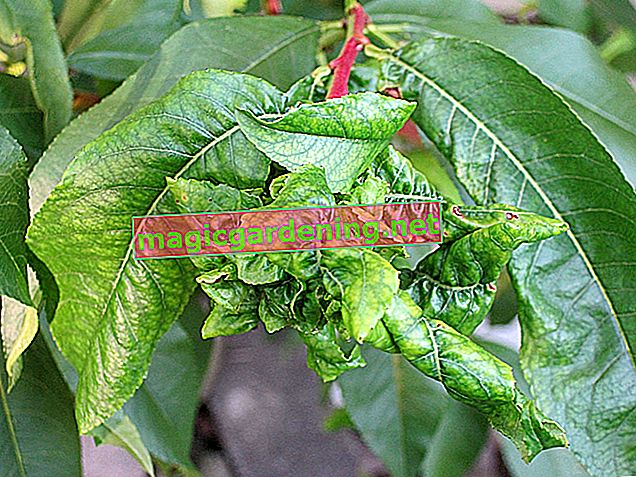
The characteristics of frizziness
The ripple disease affects not only the nectarine tree, but also peach and apricot trees. It is clearly visible on the leaves and has these characteristics:
- wavy protuberances and thickenings
- in the colors yellow-green to reddish
- new shoots grow compressed
- the leaves are bundled and deformed
- the infected leaves and fruits fall off prematurely
also read
- Information and tips on pruning the nectarine tree
- Combating peach curl disease
- Planting a nectarine tree yourself - instructions
The cause of the frizz disease
The curl disease in the nectarine tree is caused by a fungus. The so-called Taphrina deformans is feared because it survives the winter months as a fungal network and infects trees. When the temperatures rise above 10 degrees Celsius, the frizz disease spreads. The fungal mycelium breaks down into small cells that spread through precipitation and infect the leaves and flower buds that have not yet developed.
The Consequences of Frizziness
After the leaves have sprouted, the curl disease becomes visible on the nectarine tree. The young leaves are reddish in color, deformed and blistered. A whitish fungal coating forms on its upper side, the spores of which colonize the shoot buds without further damage being visible. The infected leaves fall off early. As a result, the frost hardiness of the nectarine tree is reduced, which is the real danger of curl disease.
Preventive measures against frizziness
The preventive measures against the curl disease in the nectarine tree include natural plant fortification and chemical treatment. The ideal time for natural and plant-strengthening care is at the end of January. Before this, all fruit mummies and the deformed shoot tips are removed and disposed of with household waste.
- The entire crown of the nectarine tree is thoroughly sprayed from all sides with an organic plant tonic. This procedure is repeated three to four times after two to three weeks.
- A chemical treatment is carried out with the plant protection product Compo Duaxo Universal, fungus-free, which is approved for home gardens. It is performed at least three times and repeated after seven to ten days.
Tips & Tricks
An extract from field horsetail is very successful in the fight against curl disease and also against fungal infestation, which brings a clear improvement both preventively and in acute illness.








